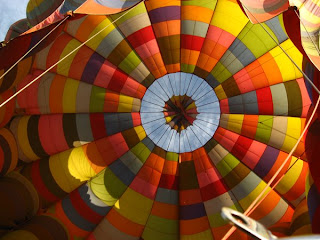




The thrill-seeking trio trimmed the tree-tops yesterday in their quest for adrenalin rushes - although "I wasn't as frightened as I expected" reported the youngest member of the party. SA offers rather understatedly named "canopy tours" in various locations around the country - this one was again in the Magaliesberg (which I learned yesterday is pronounced with a hard H on the first G - ma-HA-leesburg). It's a brilliant idea - find a ravine filled with trees and criss-cross it with cables - hook up tourists and push them off the platforms. Great fun. It was also billed as a tour of the history and ecology of the area, but the gung-ho guides didn't bother with any of that hippy nonsense; instead they made lots of jokes about how dangerous the exercise is, ratcheting up the drama - "please write a contact name on the form so we can call someone to identify your body"; "we take your lunch order now but the cook waits to see if you come back"; "see that brown rock over there behind the platform? That's a bushman cave painting. If you don't brake on this run you're going to make it browner." Great fun. It's also a fantastic way to travel - we should rig up all the tall buildings in city centres and have more fun commuting.
We spent the evening at Moyo's, an African restaurant in a secure compound - there was music in the piazza when we arrived but this was rained off by a massive storm which started at ten and seemed to last all night - luckily there were several types of music going on inside the restaurant (including a group of waitresses who put on a well-choreographed dance routine), face-painting, transvestites on stilts, and far too much to eat - including kudu and springbok. More fun - although we had to make the usual adjustment of social conscience when walking and driving past the security staff guarding the entrances, guarding the cars, guarding my complex, protecting the lucky privileged, acting as human deterrents - they looked glum, in no mood for wishing anyone happy new year, and one can only sympathise - but then we, the lucky privileged, seem to need them there, all the time, even on new year's eve.














































